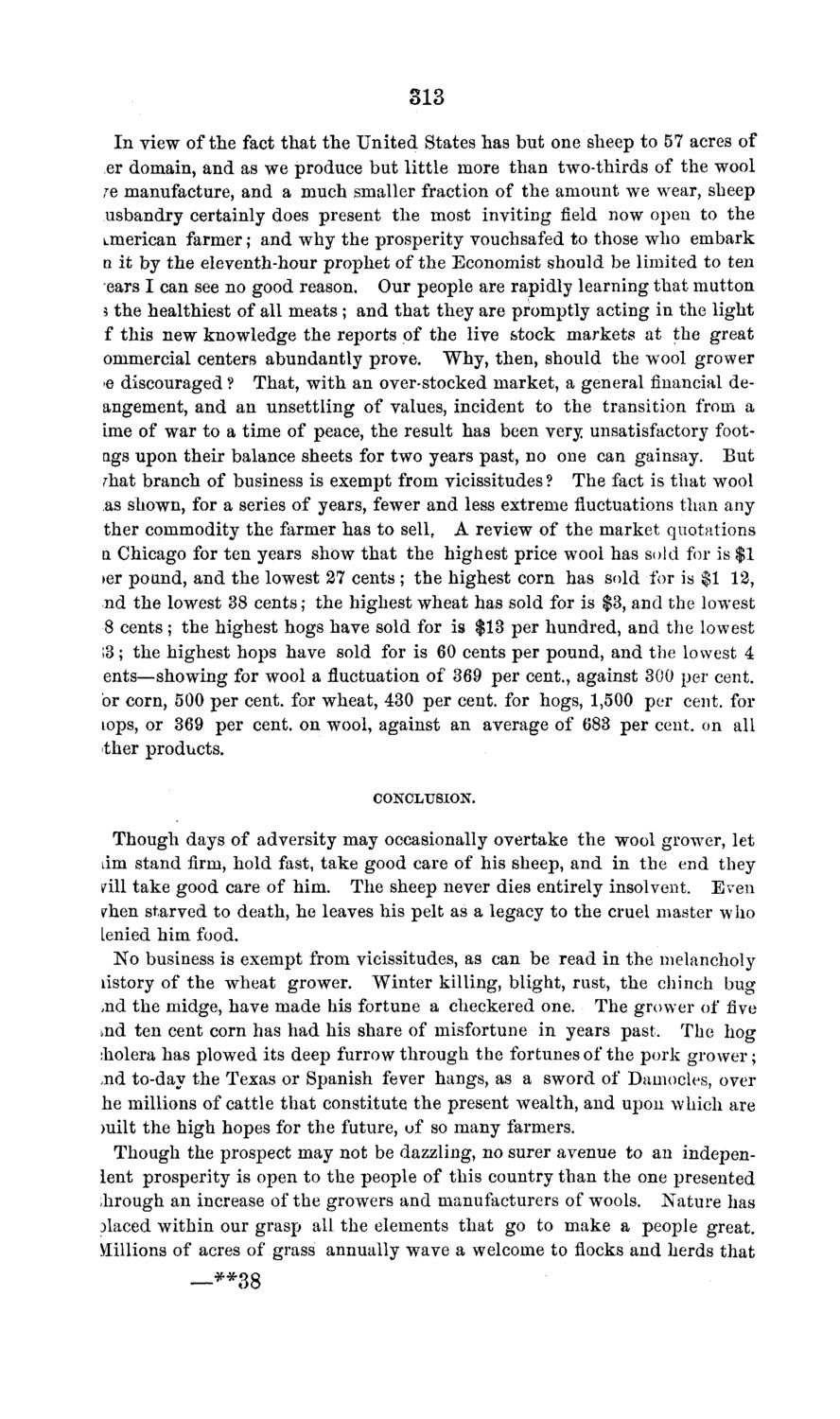| |
| |
Caption: Board of Trustees Minutes - 1869
This is a reduced-resolution page image for fast online browsing.

EXTRACTED TEXT FROM PAGE:
313 In view of the fact that the United States has but one sheep to 57 acres of er domain, and as we produce but little more than two-thirds of the wool re manufacture, and a much smaller fraction of the amount we wear, sheep usbandry certainly does present the most inviting field now open to the Lmerican farmer; and why the prosperity vouchsafed to those who embark D it by the eleventh-hour prophet of the Economist should be limited to ten ears I can see no good reason. Our people are rapidly learning that mutton 3 the healthiest of all meats ; and that they are promptly acting in the light f this new knowledge the reports of the live stock markets at the great ommercial centers abundantly prove. Why, then, should the wool grower » discouraged ? That, with an over-stocked market, a general financial dee angement, and an unsettling of values, incident to the transition from a ime of war to a time of peace, the result has been very unsatisfactory footags upon their balance sheets for two years past, no one can gainsay. But rhat branch of business is exempt from vicissitudes ? The fact is that wool as shown, for a series of years, fewer and less extreme fluctuations than any ther commodity the farmer has to sell, A review of the market quotations a. Chicago for ten years show that the highest price wool has sold for is $1 »er pound, and the lowest 27 cents ; the highest corn has sold for is $1 12, nd the lowest 38 cents; the highest wheat has sold for is $3, and the lowest 8 cents; the highest hogs have sold for is $13 per hundred, and the lowest ;3; the highest hops have sold for is 60 cents per pound, and the lowest 4 ents—showing for wool a fluctuation of 369 per cent., against 300 per cent, or corn, 500 per cent, for wheat, 430 per cent, for hogs, 1,500 per cent, for Lops, or 369 per cent, on wool, against an average of 683 per cent, on all ther products. CONCLUSION. Though days of adversity may occasionally overtake the wool grower, let Lim stand firm, hold fast, take good care of his sheep, and in the end they rill take good care of him. The sheep never dies entirely insolvent. Even phen starved to death, he leaves his pelt as a legacy to the cruel master who Lenied him food. No business is exempt from vicissitudes, as can be read in the melancholy listory of the wheat grower. Winter killing, blight, rust, the chinch bug Lnd the midge, have made his fortune a checkered one. The grower of five jid ten cent corn has had his share of misfortune in years past. The hog iholera has plowed its deep furrow through the fortunes of the pork grower; ,nd to-day the Texas or Spanish fever hangs, as a sword of Damocles, over he millions of cattle that constitute the present wealth, and upon which are milt the high hopes for the future, of so many farmers. Though the prospect may not be dazzling, no surer avenue to an indepenlent prosperity is open to the people of this country than the one presented hrough an increase of the growers and manufacturers of wools. Nature has Dlaced within our grasp all the elements that go to make a people great. Millions of acres of grass annually wave a welcome to flocks and herds that —**38
| |